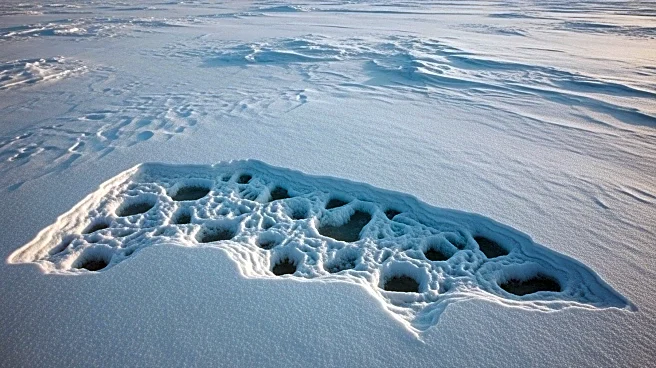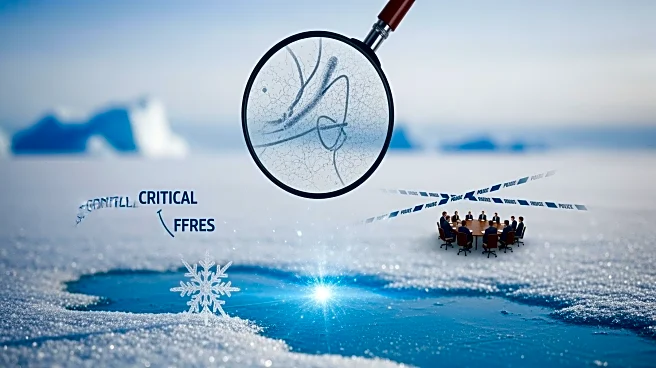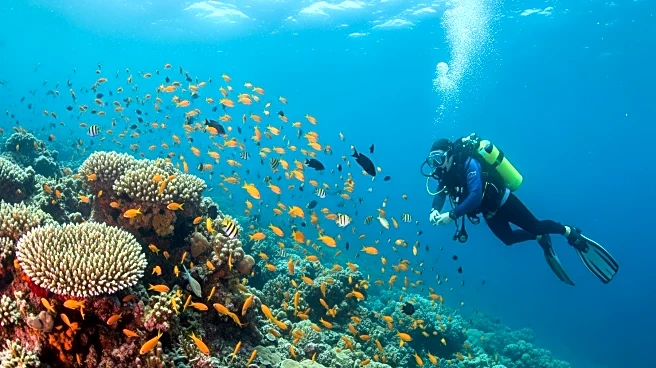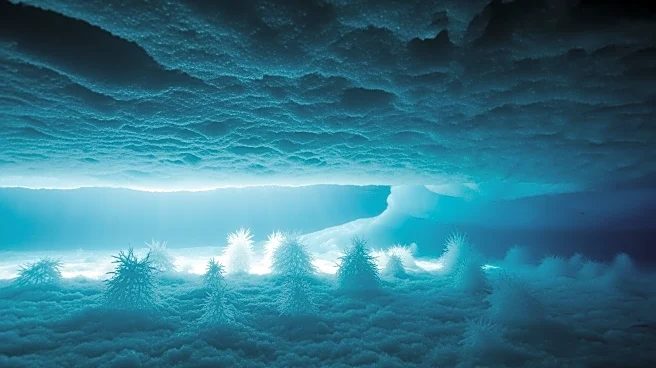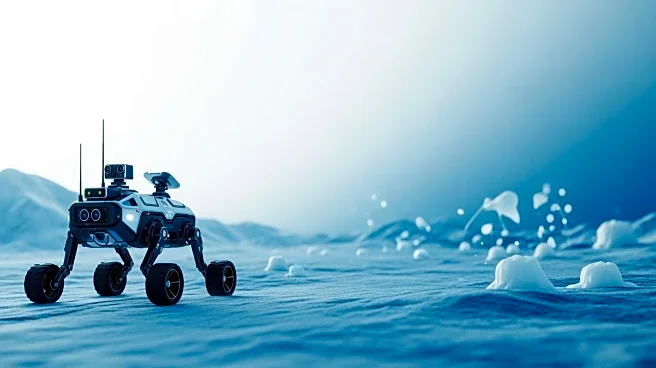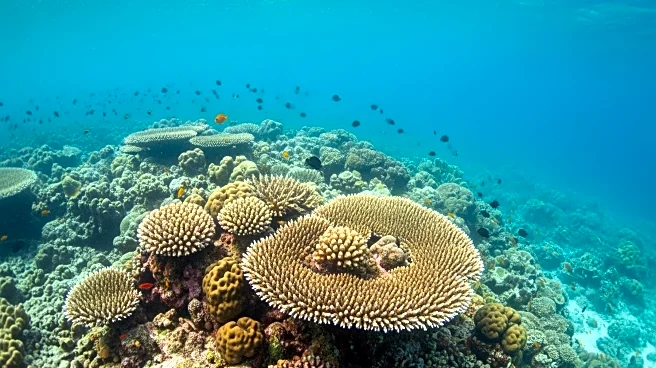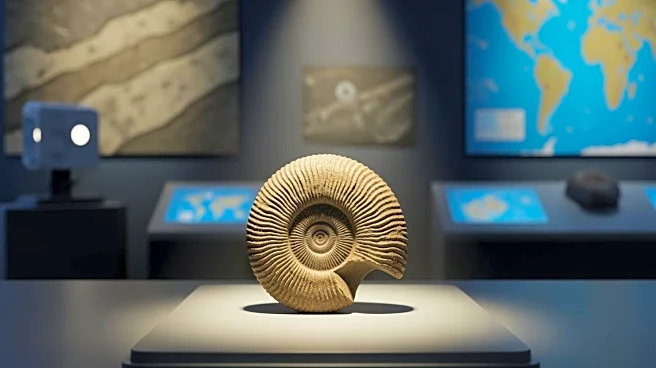What's Happening?
An expedition to the western Weddell Sea in Antarctica, initially aimed at locating the HMS Endurance shipwreck, has led to the discovery of geometric patterns created by fish nests on the seafloor. The expedition, conducted in 2019, faced extreme sea ice
conditions similar to those that trapped the Endurance in 1915, preventing the search for the wreck. Researchers used a remotely operated underwater vehicle to capture footage of marine life, revealing nests arranged in distinct shapes. These nests belong to the yellowfin notie fish, which thrive in high-pressure, cold-water environments. The discovery highlights the biodiversity of the Weddell Sea, a region experiencing rapid climate change.
Why It's Important?
The findings underscore the ecological significance of the Weddell Sea, a region home to diverse marine life, including fish, brittle stars, and sponges. The geometric patterns of the fish nests suggest adaptive strategies for survival against predators, emphasizing the need for conservation efforts. Scientists are advocating for the Weddell Sea to be designated as a Marine Protected Area to safeguard its fragile ecosystem. This research provides crucial evidence of breeding habitats, supporting conservation proposals and highlighting the importance of protecting unique environments amid climate change.
What's Next?
The study's authors are pushing for the Weddell Sea to be recognized as a Marine Protected Area, a move that would legally protect its vulnerable ecosystems. This designation would help preserve the biodiversity of the region, which is threatened by climate change and human activities. Continued research and exploration are expected to further uncover the ecological dynamics of the Weddell Sea, potentially influencing global conservation policies. The findings may also prompt further expeditions to study the impact of climate change on Antarctic marine life.
Beyond the Headlines
The discovery of geometric fish nest patterns in the Weddell Sea raises questions about the adaptive behaviors of marine species in extreme environments. The nests' arrangements suggest complex survival strategies, offering insights into the ecological interactions within the seafloor community. This research contributes to a broader understanding of how climate change affects marine ecosystems, highlighting the need for international cooperation in conservation efforts. The study also demonstrates the value of advanced underwater technology in uncovering hidden aspects of marine biodiversity.
